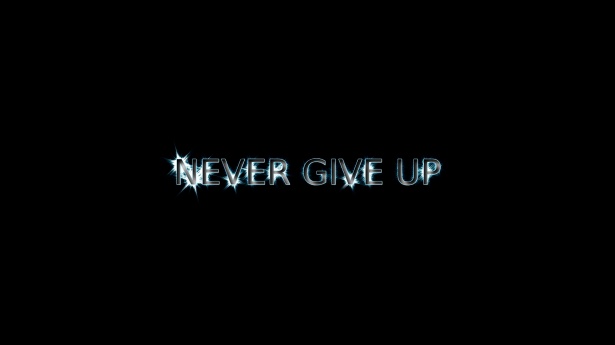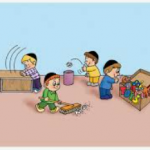“I don’t want to do this anymore.” In over 27,000 class periods I’d never thought those words before, but recently, I’d been thinking them before my three seventh grade math classes everyday.
Our seventh grade is a singularly rich combination of low skills, bad attitudes, misbehavior, and a pack mentality that rivals the Lord of the Flies. Many students broke up with math long ago. So, very early in the year my plans for highly engaging lessons, focusing on problem-solving, debate, and the inherent satisfaction of taking on and meeting a challenge took a torpedo to the hull and sank like the Lusitania.
I retreated into worksheets for content and punishment for behavior. It ground on for nearly three quarters until one afternoon I realized I didn’t want to do it anymore.
I didn’t want to stop teaching, I just didn’t want to keep teaching the way I had been. And without a clear way forward, I felt hopeless. I told some colleagues what was going on in my head. One, our restorative practices expert, Monica Kaminski (to whom I’ve referred in almost every post this year), suggested I consult Rachel Ruder, our academic intervention specialist. I did and we scheduled time for her to observe the three classes I struggled with.
Ms. Kaminski also said she’d been meaning to visit my 8th grade math class to observe a student there I’d been having problems with. The student felt I was singling her out when other students were doing the same things. I assured Ms. Kaminski that wasn’t true. On the day she visited class, she stayed the whole period.
When class ended she told me the boy in the grey hoody had been talking whole time. I had no idea. He was better at not getting noticed. Ms. Kaminski didn’t have to tell me that the girl would have noticed and thus felt the way she did. Ms. Kaminski recommended standing near him regularly whether or not I knew he was talking. She also pointed out that the girl was copying all her answers. She looked equally engaged with the friends she was working with. Yet, she was actually lost in the content and didn’t know how to use the calculator. She told me that that PBIS research concludes that peer to peer teaching is the number one intervention for improving student behavior and suggested I ask her friends to coach her and make sure she understands everything instead of just letting her copy. (I’ve since done that.)
My gut reaction was to deny and defend myself. But to what end? To stand in front of this class, too, and think, “I don’t want to do this anymore?” So, I accepted the obvious and told her that in 32 years, no one had ever given a more honest and constructive evaluation of my teaching.
The next day I taught better than I had for months.
Ms. Ruder observed one seventh grade class on Friday and all three yesterday. Each time, she arrived during passing period to see how kids entered class and stayed until they left. We’ll have a formal debrief tomorrow, but her preliminary comments are still instructive.
On the positive side she noted that students know and mostly follow routines and was pleased that one of our most at-risk students immediately complied when I asked him to remove his hoodie. The lesson incorporated multiple modalities, collaboration, and discussion. Finally, I rewarded PRIDE points (an integral part of our incentive system) for positive contributions.
She felt the lesson needed a connecting activity to tie it to the previous day’s work. Additionally, I needed to end the day with with a short, concrete task to close out the learning.
Regarding behavior, Ms. Ruder made the acute observation that some of the rowdier, seemingly off-task students were actually more productive than some of the quietest students. Finally, she suggested keeping in mind a 4:1 positive to negative comment ratio when reinforcing student behavior.
I’m a little embarrassed. Every suggestion that Ms. Kaminski and Ms. Ruder made is well-known and elementary to good teaching. And if asked if I do those things, I would have said yes to almost all of them – and believed it was true. But it took their objective eyes to remove the scales from my own.
Now, I may be embarrassed, but I’m not ashamed. I know that everything they suggested is easily within my reach. Moreover they restored my hope that the year remains salvageable and helped me believe I’ll never have to think, “I don’t want to do this anymore,” again.










Comments 6
It’s so hard when you have that “I don’t want to do this anymore” feeling. I’ve been there a couple times before in my teaching career, and it makes for a rough year. I’m glad that you have the resources that can help to alleviate that feeling, and that you were able to take the constructive criticism to improve your teaching for both yourself and your students. I hope the year will end better than it started!
I’ve felt like this. And there were times I knew I wasn’t at my teaching best and needed the honest feedback to help reengage and reframe my thinking. This is the model we need to aspire to, one where we as teachers seek help and advice to grow. Where we are reflective enough to know something just isn’t working. It sounds like you are in a trusting, supportive system!
It sounds like you handled the situation well. Positive ending.
Sandy, I applaud your vulnerability in this writing! You are an excellent teachers with a clear passion for teaching and a heart for students. It’s so easy for me to look at you and convince myself that you don’t struggle. The fact is, we all struggle, just not always in the same way at the same time. I’m excited that you are getting your mojo back, and I hope this piece helps someone else get theirs back too!
Sandy, I love and appreciate your vulnerability and honesty in this post. I wish we were all as reflective and open to feedback as you have proven to be yourself. It takes guts to admit errors and true teaching chops to fix and improve them. Your students are so lucky to have you! We are lucky to have you as a role model and teacher leader.
Sandy,
Thank you for sharing this post. You captured a moment in your teaching where many other teachers may very well gone in a different direction. You sought out and accepted honest feedback. you reflected on your current reality and chose to move forward and adjust your teaching.